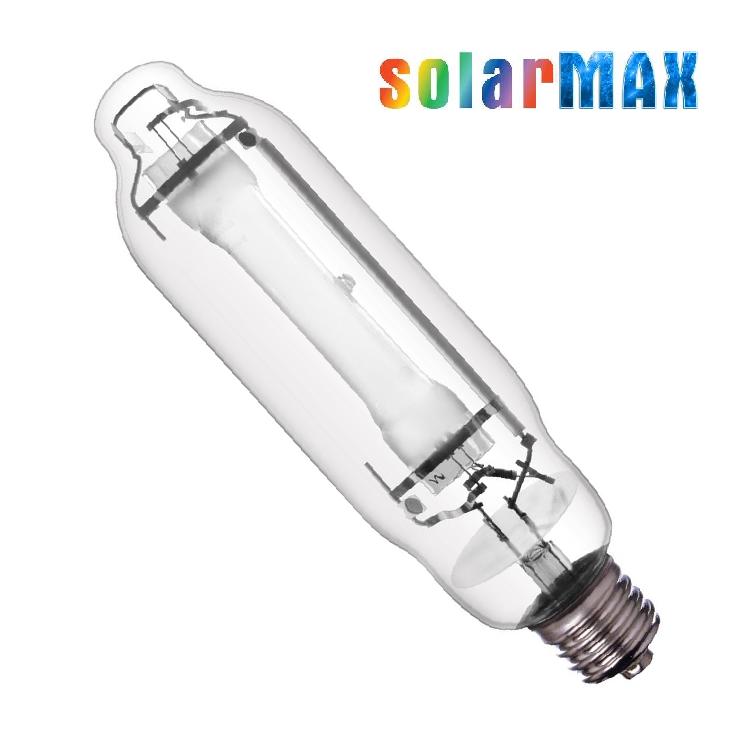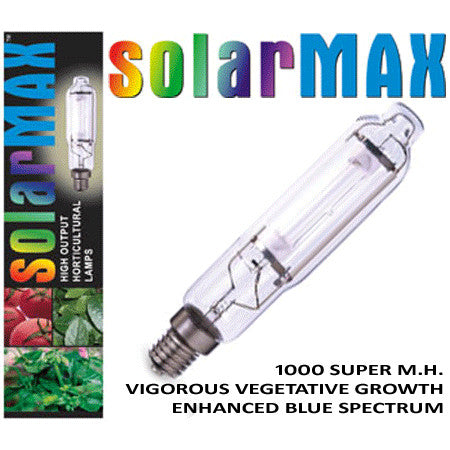1000W MH Solarmax lamps deliver 30% more "nutritious" light radiation than standard lamps. The result - more vigorous, vegetative growth and stronger roots during the important early stages of a plant's development.
PRODUCT DESCRIPTION
SolarMax grow lamps are known for using the latest technology to provide powerful, affordable, and environmentally responsible products. This latest edition of the SolarMax 1,000 watt conversion bulb provides up to 90,000 lumens of metal halide light. Metal halide produces blue, and violet light spectra which are beneficial to a plant's root system and health during their vegetative stage.
Lamp Features:
- Manufacturer: SolarMax
- Model: MHT1000W Veg/Conversion
- Wattage: 1000W
- Lumens: 90,000
- Color Temp: 7200K
- CRI:
- Finish: Clear
- Base: Mogul E39
- ANSI Code:
- Burn Position: Universal
- Bulb Life: 15,000 hrs
- Price Shown: Per Lamp
In all stages of plant growth, plants need spectral energy (light) between 400 nm - 700 nm.
This is technically known as "Photosynthetically Active Radiation" or "PAR".
These combined spectral distributions provide all the light energy needed for your plants.
In younger plants it is the region between 380 nm - 520 nm that is the most crucial.
This region is commonly referred to as "Blue Light".
When is the Right Time to Switch from MH to LEDs for Cannabis?
In recent years, light-emitting diodes, or LEDs for short, have carved out their place in the cannabis lighting world — and given rise to a lot of questions. Can LEDs produce the same high-quality flower as high-pressure sodium (HPS) lamps? Will they save you money? And what are the drawbacks of LEDs that companies aren’t telling you?
HPS lights have long been the industry standard. And as the saying goes, “if it isn’t broken, don’t fix it.” It’s true; there’s nothing wrong with high-intensity discharge (HID) technologies like HPS. In fact, HID lamps might be best for your application and budget.
But, if you’re reading this, you’re probably ready to tap the benefits of LEDs — benefits which include increased efficiency, cost savings, higher light intensity, and a level of control over the lighting spectrum that’s impossible with HPS. Even better, LEDs can give you an overall healthier plant. So, let’s take a look at the two technologies to see which is right for you.




